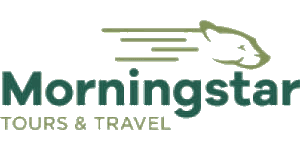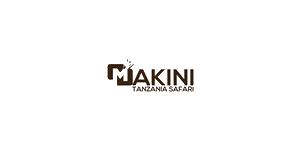
5 Fascinating Facts About the Eland
 By
Mike Unwin
By
Mike Unwin
Mike is an award-winning wildlife writer, former editor of Travel Zambia magazine and author of the Bradt Guide to Southern African Wildlife.
The Eland, an ox-like antelope, is the largest in the world. It belongs to the ‘spiral-horned’ subfamily, along with the likes of kudu and bushbuck. There are two species. The first is the giant eland (Taurotragus derbianus) is slightly the larger of the two, and occurs in central and Western Africa. The second is the more familiar, common eland (Taurotragus oryx). It occurs in east and southern Africa, from Kenya to Botswana. Bulls of both species may top 900kg and stand 1.7m at the shoulder. Females are about half the male’s weight.
Eland inhabit open country, from montane grasslands to semi-deserts. They are shy and quick to retreat from disturbance, so a safari sighting is always something special. Below are five interesting facts about the eland.
- They are great jumpers, despite their huge size, and can clear a two-metre fence with ease.
- Listen closely and you’ll hear a distinct clicking sound as they approach. This is thought to come from their hooves, which splay apart and click back together under the animals’ great weight.
- It was both food and spiritual inspiration to the prehistoric hunter-gatherer peoples of southern Africa. And it features prominently in rock- and cave-art across the region. Today place names such as Elandsfontein and surnames such as Mpofu (‘eland’ in Zulu) suggest how central to the region’s culture this antelope once was.
- The giant eland is also called ‘Lord Derby's eland’ in honour of Edward Smith-Stanley, 13th Earl of Derby. It was first seen in England between 1835 and 1851. At that time, Lord Derby sent botanist Joseph Burke to South Africa to collect animals for his museum and menagerie.
- The common eland is better adapted than cattle to the African environment and is easily domesticated. It has been farmed for its meat and milk in both South Africa and Russia. A female can produce up to 7kg of milk per day, which is richer in fat than cow milk.
Want To Go on an African Safari?
Click on the button below to compare African safaris offered by top-rated tour operators.
 By
Mike Unwin
By
Mike Unwin
Mike is an award-winning wildlife writer, former editor of Travel Zambia magazine and author of the Bradt Guide to Southern African Wildlife.
More About This AuthorAfrican Safari Tours
-
![6-Day Lake Manyara Ngorongoro Crater and Serengeti Tour]()
6-Day Lake Manyara Ngorongoro Crater and Serengeti Tour
$2,529 to $2,541 pp (USD)
Tanzania: Private tourLuxuryLodge & Tented Camp
You Visit: Arusha (Start), Tarangire NP, Serengeti NP, Ngorongoro Crater, Lake Manyara NP, Arusha (End)

Gosheni Safaris Africa
5.0/5 – 977 Reviews
-
![5-Day Ultimate Kenya Safari in Private 4 X 4 Lancruiser]()
5-Day Ultimate Kenya Safari in Private 4 X 4 Lancruiser
$1,683 to $2,352 pp (USD)
Kenya: Private tour
Mid-range Lodge & Tented CampYou Visit: Nairobi (Start), Amboseli NP, Lake Nakuru NP, Masai Mara NR, Nairobi (End)

Morning Star Tours & Travel
5.0/5 – 450 Reviews
-
![6-Day Honeymoon Tour with Hot Air Balloon Experience]()
6-Day Honeymoon Tour with Hot Air Balloon Experience
$2,900 pp (USD)
Tanzania: Private tour
Mid-range Lodge & Tented CampYou Visit: Arusha (Start), Tarangire NP, Serengeti NP, Ngorongoro Crater, Lake Manyara NP, Arusha (End)

Go Makini Tanzania Expedition
4.9/5 – 124 Reviews



 Subscribe to our newsletter
Subscribe to our newsletter
 Follow us on Instagram
Follow us on Instagram





